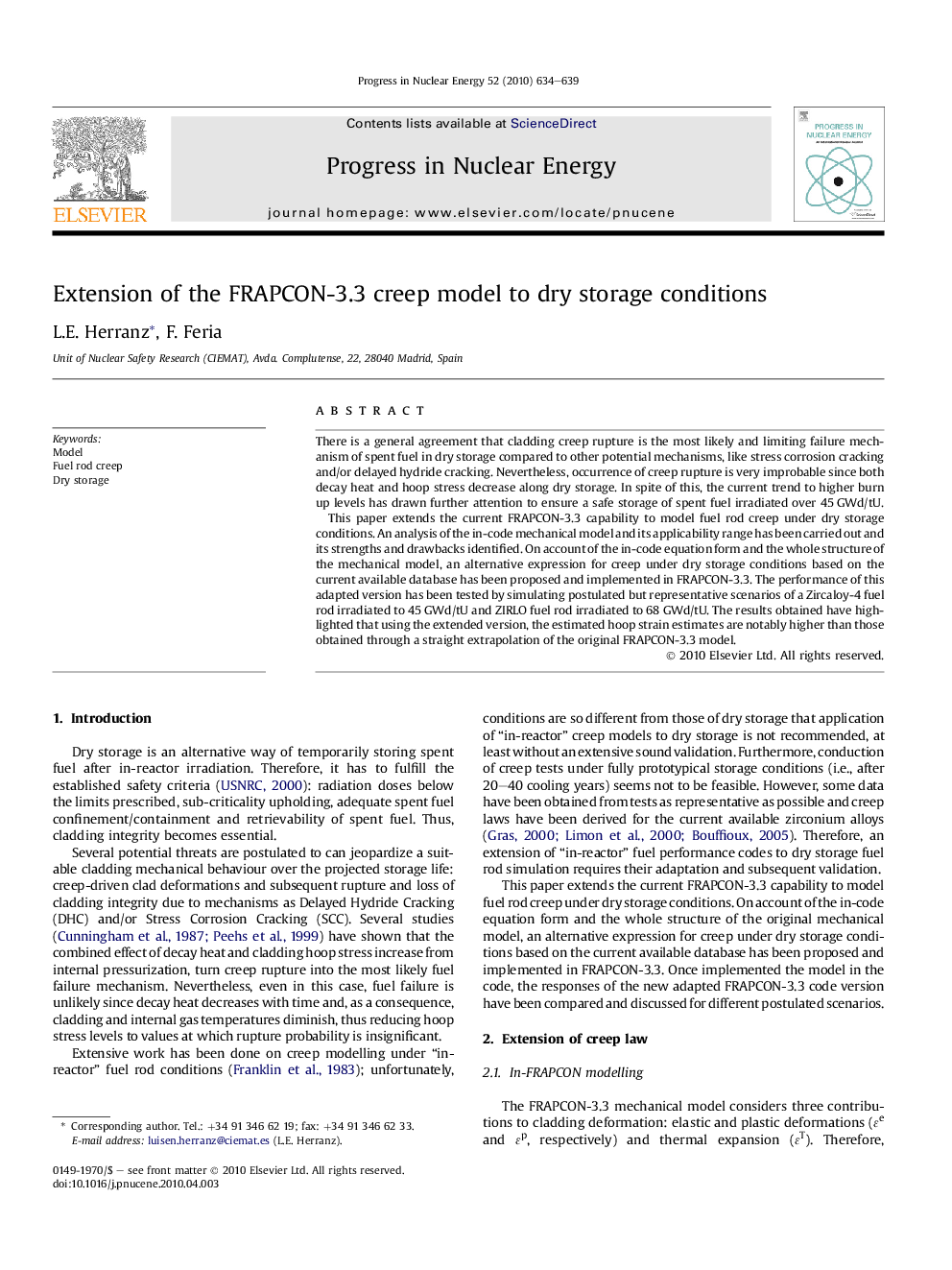| Article ID | Journal | Published Year | Pages | File Type |
|---|---|---|---|---|
| 1741476 | Progress in Nuclear Energy | 2010 | 6 Pages |
There is a general agreement that cladding creep rupture is the most likely and limiting failure mechanism of spent fuel in dry storage compared to other potential mechanisms, like stress corrosion cracking and/or delayed hydride cracking. Nevertheless, occurrence of creep rupture is very improbable since both decay heat and hoop stress decrease along dry storage. In spite of this, the current trend to higher burn up levels has drawn further attention to ensure a safe storage of spent fuel irradiated over 45 GWd/tU.This paper extends the current FRAPCON-3.3 capability to model fuel rod creep under dry storage conditions. An analysis of the in-code mechanical model and its applicability range has been carried out and its strengths and drawbacks identified. On account of the in-code equation form and the whole structure of the mechanical model, an alternative expression for creep under dry storage conditions based on the current available database has been proposed and implemented in FRAPCON-3.3. The performance of this adapted version has been tested by simulating postulated but representative scenarios of a Zircaloy-4 fuel rod irradiated to 45 GWd/tU and ZIRLO fuel rod irradiated to 68 GWd/tU. The results obtained have highlighted that using the extended version, the estimated hoop strain estimates are notably higher than those obtained through a straight extrapolation of the original FRAPCON-3.3 model.
